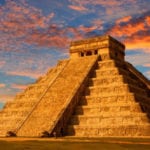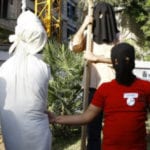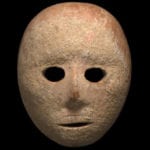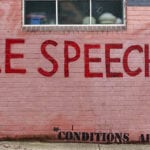 History
History  History
History  Movies and TV
Movies and TV 10 Practical Movie Monsters Remade with CGI
 Politics
Politics 10 U.S. Presidents Who Cheated on Their Wives
 Humans
Humans The 20th Century’s 10 Most Famous Centenarians
 History
History 10 Influencers Who Lived Centuries before Social Media
 Miscellaneous
Miscellaneous 10 Ancient Etiquette Rules You Never Knew Existed
 Our World
Our World Planet Earth’s 10 Most Hardcore Natural Creations
 Movies and TV
Movies and TV 10 Times Twin Movies Competed with Each Other
 The Arts
The Arts 10 Masterpieces Plucked from the Artist’s Subconscious
 Crime
Crime 10 Fascinating Facts about Rikers Island
 History
History 10 Shocking Roman Assassinations That Inspired the Ides of March
 Movies and TV
Movies and TV 10 Practical Movie Monsters Remade with CGI
 Politics
Politics 10 U.S. Presidents Who Cheated on Their Wives
Who's Behind Listverse?

Jamie Frater
Head Editor
Jamie founded Listverse due to an insatiable desire to share fascinating, obscure, and bizarre facts. He has been a guest speaker on numerous national radio and television stations and is a five time published author.
More About Us Humans
Humans The 20th Century’s 10 Most Famous Centenarians
 History
History 10 Influencers Who Lived Centuries before Social Media
 Miscellaneous
Miscellaneous 10 Ancient Etiquette Rules You Never Knew Existed
 Our World
Our World Planet Earth’s 10 Most Hardcore Natural Creations
 Movies and TV
Movies and TV 10 Times Twin Movies Competed with Each Other
 The Arts
The Arts 10 Masterpieces Plucked from the Artist’s Subconscious
 Crime
Crime 10 Fascinating Facts about Rikers Island
10 Mysterious Documents We Couldn’t Read Until Recently
Man has been documenting history with the written word for centuries. Occasionally, we still find something that is completely unlike anything we’ve ever seen before and sometimes modern technology reveals elements hidden in even the most well-known and well-documented of texts. This list looks at ten incredibly important documents and the secrets they have kept hidden until recently.
10 Hidden Text in England’s Oldest Bible
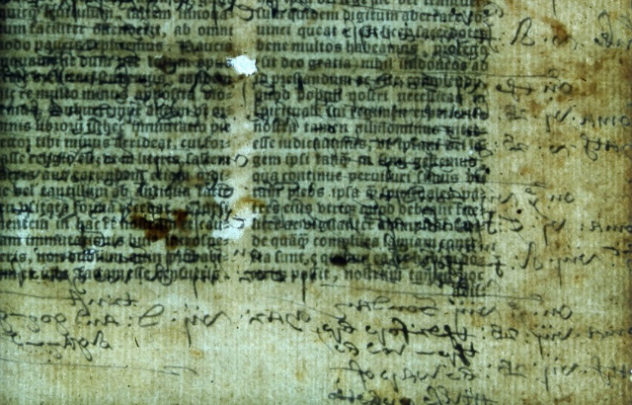
Today, you can’t go into a hotel room without finding a copy of the Bible. They’re seemingly everywhere, but that wasn’t always the case. Translating the Bible into English was once deadly work, and by the time Henry VIII started re-writing centuries of religious beliefs to suit his own needs and was well on his way to making the country Protestant, owning an unapproved version of the Bible could earn a person a death sentence. In 1535, an official and authorized version of the Bible was published, complete with an introduction by the king himself. Today, there are only seven copies left, and almost five centuries after the books came off the press, scholars have found that one of them has a series of annotations hidden in the margins.
The text had been hidden underneath pieces of paper that had been fixed to the Bible’s original pages. Since there was no way to remove the paper without destroying the Bible, historians turned to the Queen Mary University of London’s School of Dentistry to help them take long-exposure photos of the hidden text. Those photos were then run through a computer program that would drop out all of the text that had been printed and leave behind only the handwritten words.
Some of the handwritten notes turned out to be instructions as to which parts of the Bible were to be read on which days of the year, and which verses were associated with which occasion. Written in English, the notes were based on information written in Thomas Cromwell’s later Great Bible, and it seems to be an attempt to bring older Latin ceremonies in line with new orders from the monarchy that said religious ceremonies now needed to be conducted in English. The discovery of the text is helping to rewrite the history of the Reformation, showing just what a gradual process it really was.
Interestingly, not all of the notes were of a religious nature, as there was also a promissory note from James Elys Cutpurse. The Londoner promised to pay William Cheffyn of Calais 20 shillings for purposes unknown. When researchers looked sought to find historical information on Cutpurse, they found that he had been hanged in 1552 in Tyborn.
9 Thomas Jefferson’s Original Declaration of Independence
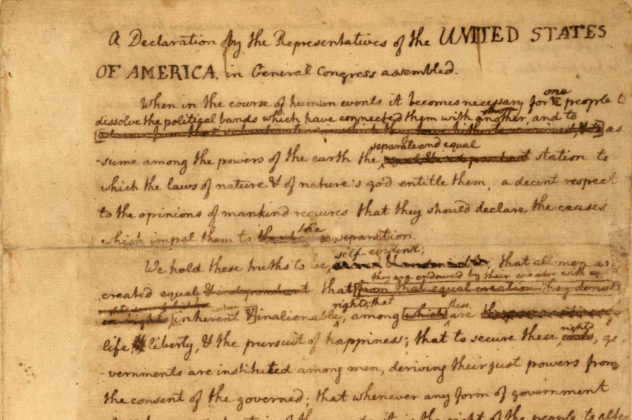
Thomas Jefferson is an incredibly complicated figure, and it is a shame that all we are really taught about him in school is that he was a revolutionary instrumental in the founding of America. We all know that he wrote the Declaration of Independence, but it wasn’t until recently that the Library of Congress’ Preservation Research and Testing Division did a hyperspectral imaging scan on Jefferson’s rough draft of the document.
They found one change in particular that they think likely marks the moment when Jefferson realized just what it was that they were doing in their denial of British rule. The scan revealed that a phrase that would ultimately become “fellow-citizens” was originally written as “fellow-subjects”. It is a small change in the physical sense, but it was a monumental one in regards to the mindset of the men who were on the cusp of declaring the American Colonies free from British rule. As he was condemning the actions of the British monarch that the colonies had considered an ultimate authority since their founding, he was also, in that moment, making it clear that they were no longer going to be subjected to the rule of any other nation.
Jefferson scholars have long suspected the change, but it wasn’t until the development of technology that allows us to look at the words beneath the document that we know the moment when Jefferson turned Americans from subjects under one government into citizens of a new nation.
8 Rituals of the Great Enlightened Society of Oculists
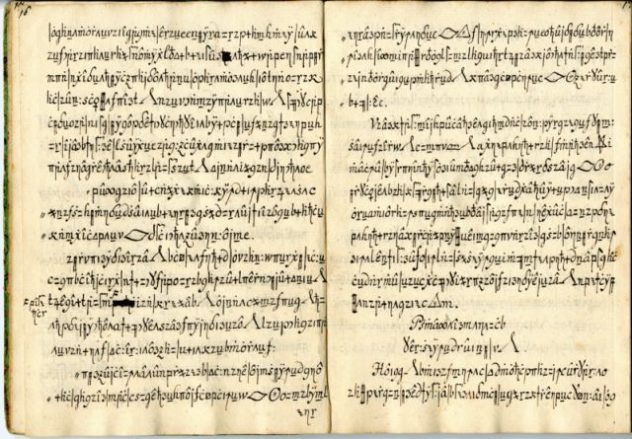
Secret societies have helped shape the world in countless ways, and throughout the centuries many have relied on coded documents to keep their secrets safe. It took modern historians 250 years to crack the code of the Great Enlightened Society of Oculists.
Deciphering the previously uncrackable code started with linguist Christiane Schaefer and colleague Wolfgang Hock. When Schaefer started a job with Uppsala University in 1998, Hock presented her with the going-away gift of a series of 100 pages of a handwritten cipher. It wasn’t until 2011 that Schaefer attended a lecture on machine translation and remembered the manuscript that been sitting on her shelf for more than a decade. University of Southern California scholar Kevin Knight was given a copy of the text, and they set about translating the cryptic document, which was written with a combination of mathematical symbols, Roman letters, and seemingly random symbols. After realizing that the familiar letters were actually acting as spaces and the message was coded in the other symbols, they started deciphering what turned out to be a secret text for Germany’s Great Enlightened Society of Oculists.
The Oculists were formed in the middle of the 18th century, and their symbolism revolved around the eye as representation of human knowledge. Based in the German town of Wolfenbuttel, part of their society was the exploration of early ophthalmology. They performed eye surgery and some of the first cataract removals, but even with the first reading the text seemed to indicate that the medical aspect of the society was just a front.
Andreas Onnerfors, an expert in the impact secret societies have had on the world, interpreted the newly discovered document as indicating that the society wasn’t just full of eye doctors, it was full of extremists who wanted to see the world burn. The document contained shrouded references to revolution and opposition to both the state and the church. The document also contained secret rites and rituals, revealing a secret society that existed within a secret society. The inner circles of the Oculists made a pretty audacious claim, too: they claimed to be the real founders of the Freemasons, and furthermore they declared that they had done it as a joke.
It was the first time the Oculists had really been examined. Most of their artifacts were shuffled off to Wolfenbuttel’s state archives in 1918, decades after the death of its 18th century leader, Friedrich August von Veltheim.
7Lost Treatises of Archimedes
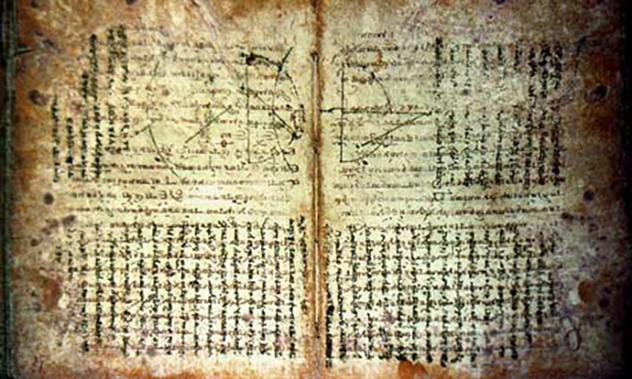
Ancient manuscripts containing copies of the work of the Greek Archimedes had made their way to Constantinople by the 9th century. At the time, the city was thriving, the city was rich, and most importantly, it was well protected against anyone who would threaten it. That made Constantinople not only a hub of learning, but a repository for precious documents and knowledge. Those prosperous centuries came to an end in 1204, when Pope Innocent III gave his approval for the Fourth Crusade. Constantinople was sacked, and at some point the manuscript found its way to Jerusalem where it was overwritten. A newly revealed date—April 13, 1229—likely marks the day that the prayer book now written on the parchment was completed.
It is likely that the reason for the stripping and writing over of the manuscript was simply that parchment was in short supply—it was a turbulent time, after all. Now a prayer book, it simply sat for centuries more until it showed up in an inventory of a Greek man living in Jerusalem, and it was noted that it was property of a monastery at St. Sabbas. It was ultimately sold to Oxford University in 1876, in a badly damaged state.
The book soon disappeared—thought to have been stolen and kept in someone’s private collection until it showed up in an auction in 1998. The new (anonymous) owner worked with the Walters Art Museum to see if there was anything left of any value as not only was the manuscript covered in mold and torn, but at some point in its history, someone had tried to turn it into a forged Byzantine document by overpainting it with gold leaf illustrations.
The art museum was able to reconstruct most of the obscured text, and they found that it contained a mathematical concept previously believed to be beyond the knowledge of the ancient Greeks: the concept of infinity. There was also a puzzle asking how many ways a 14-piece square could be reassembled (17,152, but we’re not sure if Archimedes ever figured it out). The pages covered with gold leaf proved to be more difficult to decode. That is where the Stanford Synchrotron Radiation Lab came in. Using the high tech equipment at the lab, they were able to detect iron in the ink that was still beneath all the other writing. This was the method that found the date the prayer book was finished, and it also uncovered the name of the scribe that re-used (and ultimately saved) the parchment, Ioannes Myronas.
6Plato’s Musical Code
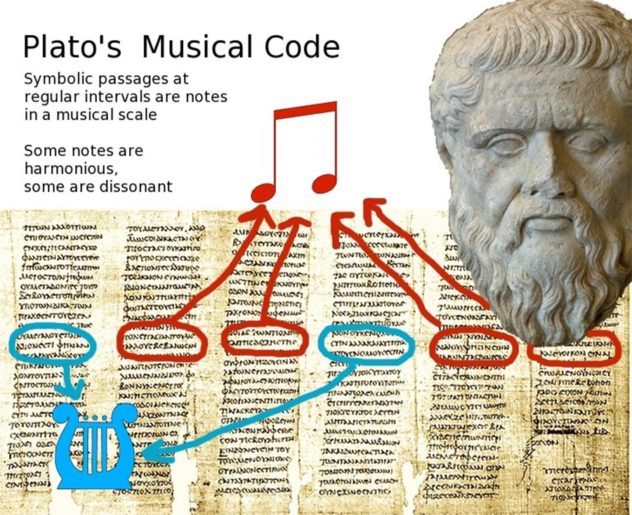
The central issue of Plato’s Republic is the question of whether or not it is always better to take a just course of action. It is a guide for the ethics and morals of politics, and it is pretty weighty stuff. While we have always been able to read The Republic, it is only recently that we have been able to read the music that Plato coded into the text.
According to Dr. Jay Kennedy from the University of Manchester, Plato used a series of symbols and hidden codes in his work that follows in the footsteps of what Pythagoras had already been advocating. It is the idea that music, nature, science and religion all go hand in hand, and Kennedy believed that Plato wove this into his writing in a secret code that was denounced by most scholars for generations. At the end of each twelfth of text, Kennedy found groups of words relating to Plato’s contemporary music scales of 12 notes. At the location of each textual “note” were words connected to ideas of harmony or dissonance.
Plato was teaching something incredibly dangerous, and that was the idea that the universe was governed not by the gods but by scientific and mathematical principles. Because people had seldom embraced new ideas when presented with a schism between science and religion, Plato knew that he needed to use a code to keep his teachings out of the wrong hands. What he left behind was a text that encapsulated his very dangerous ideas, showing just how science and nature could go hand in hand with religion.
5Codex Sinaiticus and Joshua, Chapter 1, Verse 10
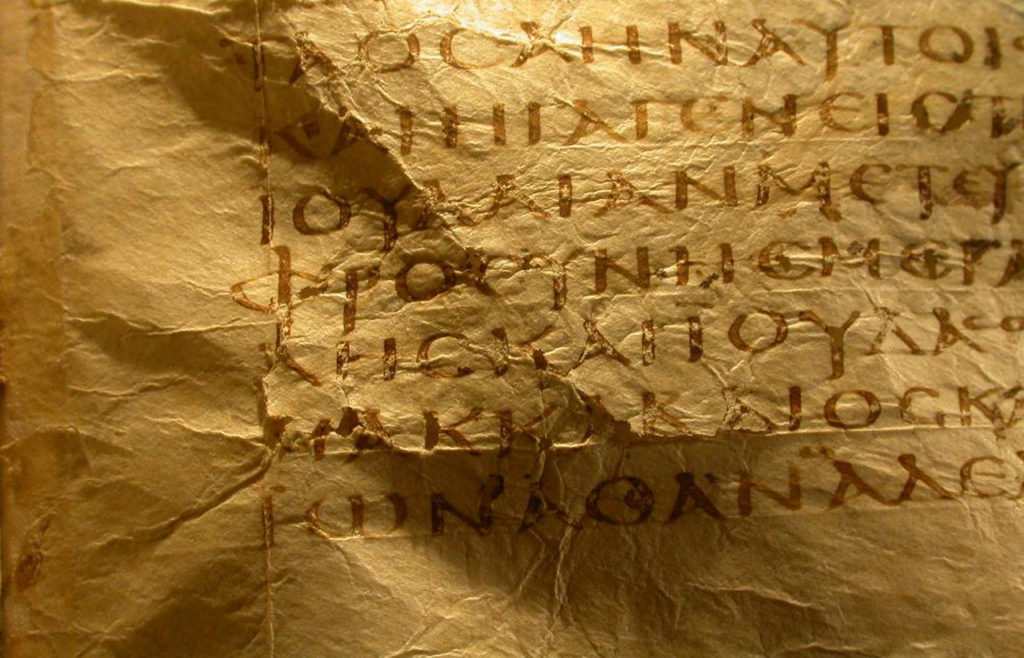
The Codex Sinaiticus is the world’s oldest Bible, and it dates back to around 350 A.D. The Greek text is now in pieces, with parts of the more than 1,460 pages held by the British Library, St. Catherine’s Monastery in Egypt, the National Library of Russia in St. Petersburg, and the Leipzig Library in Germany. Scholars have determined that four individual scribes were responsible for writing the Bible and along the way, they corrected themselves and each other, and they rewrote major parts of it. One of two of the earliest Bibles that contains all of the canonical texts, it also contains some non-canonical books: the Epistle of Barnabas and the Shepherd of Hermas.
Not just the first Bible, it is also the first bound book ever discovered. And while we have quite a lot of it—and it has been digitized for anyone to read online—there are still a few pieces that occasionally still show up.
Nikolas Sarris, a British scholar who had worked on the digitization of the Codex, found another piece of the Bible in an unlikely place. He saw it in a photograph of a book binding done by a monk at St. Catherine’s in the 18th century.
Sarris’s work digitizing the Codex meant that he was familiar with the style and size of the writing of the early Bible’s different scribes. When he emailed the librarians at St. Catherine’s and suggested that they take another look at the book, they found that he was right. The piece was the beginning of Joshua, Chapter 1, Verse 10, where Joshua addresses the children of Israel as they approached the promised land.
The ancient text was used in the re-binding of other books in the monastery’s collection, and in addition to being able to add to the Codex, Sarris also had some leads on the possibility of finding other lost works. The monastery knew which two monks had been in charge of re-binding the books, making it likely that they could find some other long-lost works hiding under the bindings of other texts.
4Minoan Tablets
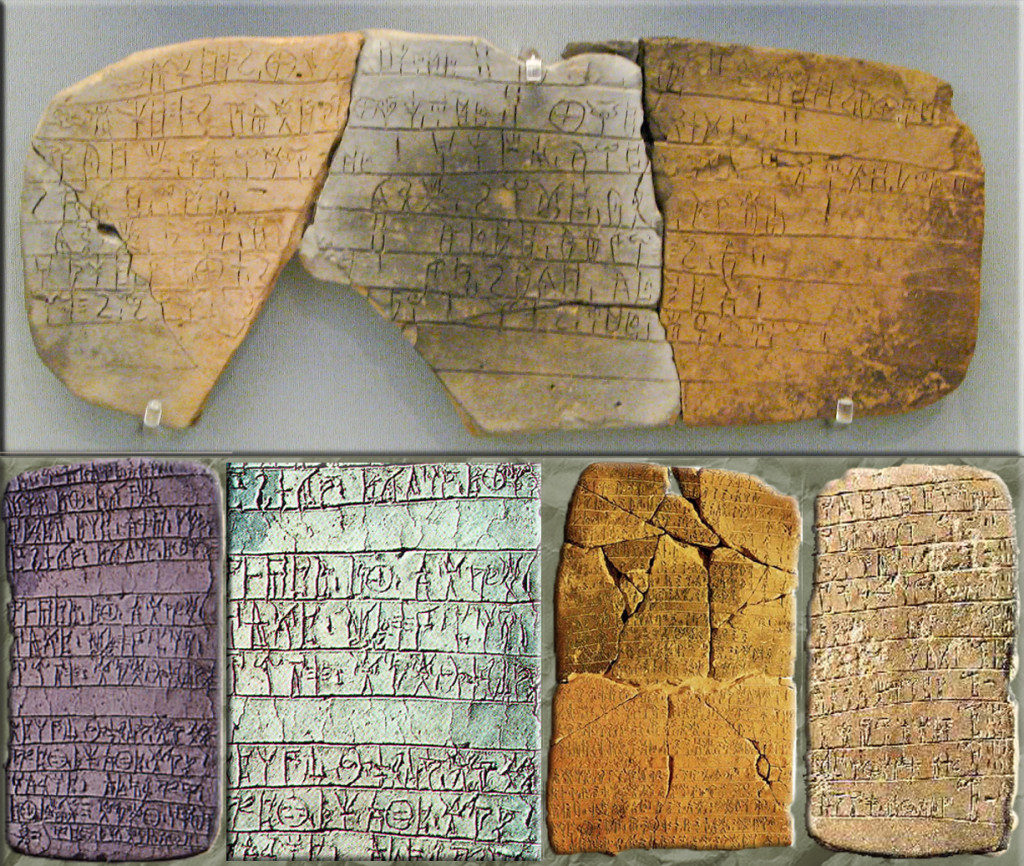
The Palace at Knossos was excavated at the turn of the 20th century, and one of the most puzzling groups of artifacts found were a set of clay tablets inscribed with a language no one recognized. By 1909, there were enough tablets to fill a book, and Sir Arthur Evans was able to split the scripts into two different languages: Linear A and Linear B. While the first language still has not been translated, we are now able to read the second—and the story of Linear B’s translator is a sad one.
By 1939, archaeologists had found evidence of Linear B on mainland Greece, but that did not entirely help with the matter of translation. It was not until 1952 that an architect named Michael Ventris decided to take a year off from his day job to devote his time to cracking the code of Linear B.
He figured out that each symbol represented a vowel and a consonant, and after scholar Alice Kober devised a grid system that would allow for mapping all of the Linear B symbols, Ventris got to work putting them all in place. He started by isolating words that only seemed to appear in texts from Knossos, guessing that they might be place names. That gave him the start that he needed to decode Linear B, and figure out that it was a version of Greek. The implications were staggering, and suddenly the world had proof that Greek was the world’s oldest living language. Now, more than 4,000 tablets were opened for study. They included everything from lists of livestock (we now know that they raised massive amounts of sheep and goats, but not many cattle or horses) to lists of known spices, lists of men, women, boys and girls—along with their assigned job duties—and even detailed records of ancient social hierarchies, industry and economy.
Ventris’s contribution to the archaeological world was an incredibly important one, but for him, what should have been a crowning achievement ended in tragedy. Barely 30 years old when he translated Linear B, he did not have the discipline needed to make the jump into the academic world full time. He returned to architecture and hated it. On September 5, 1956, he was killed when he crashed into the back of a truck.
3Illegible Diary of David Livingstone
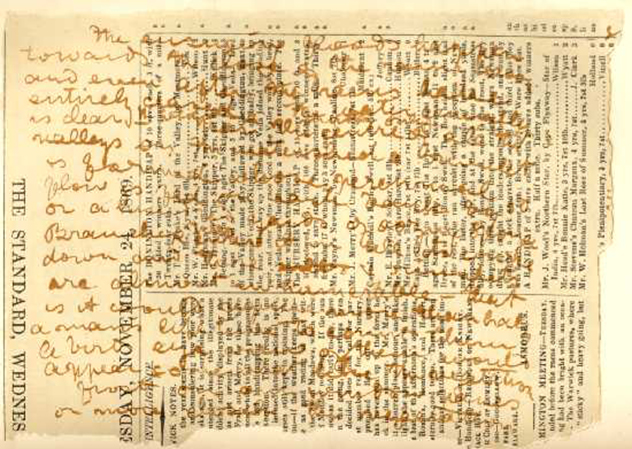
In 1871—two years before he died—Dr. David Livingstone became stranded in Africa. The situation was dire, but he still continued to write. Specifically, he wrote about a massacre that he witnessed, a story that he would share with Henry Stanley and one that would kick-start the end of the British government’s East African slave trade once it reached the public.
Livingstone recorded his first and immediate impressions of the massacre on the only thing he had at hand—pages from the London Standard newspaper. The only ink he had was made from the juice of berry seeds, and it wasn’t long before the handwritten text was illegible. Livingstone would later revise his eyewitness account when he copied it into his regular journal, which became the source for “The Last Journals of David Livingstone in Central Africa, from 1865 until his death”, a book organized and published by Horace Waller, an evangelical Christian Missionary and abolitionist.
Using a series of imaging techniques that expose the original pages to different wavelengths of light to make the berry ink legible again, a team was able to uncover the original text of what Livingstone really saw deep in the heart of Africa. The account paints a picture of Livingstone as horrified by what he sees, recounting the moment when armed slavers descended on a market in Nyangwe. The explorer suspected that his own companions might have had something to do with the massacre, and that he recognized his failure to stop it.
Liberated slaves would join his group, and his attitude toward them was something that was heavily changed and edited in the final, publicized version of his story as well. Even though he always painted himself as a dedicated abolitionist, the new pages reveal something of a much more conflicted spirit who was still searching for an answer to the question of how best to intervene in the horrors he was witness to, as he debated whether or not he should interfere at all.
2Black Book of Carmarthen
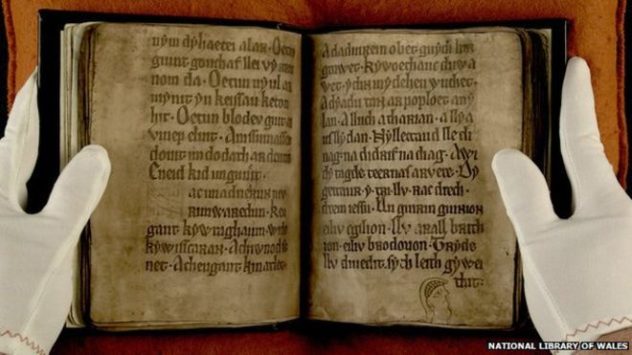
The Black Book of Carmarthen (dating to around 1250) is one of the earliest books written entirely in the Welsh language. It was discovered among the possessions of St. David’s Cathedral when registrars were carrying out the orders of Henry VIII and dissolving Britain’s monasteries. It was rescued by Sir John Price and later passed down through a series of families. It ultimately ended up in the National Library of Wales, where it has been thoroughly documented. It contains the earliest Welsh references to King Arthur and Merlin, along with a host of Middle Age-era poems and legends.
Recently exposed to UV lighting and high resolution photography, the manuscript is finally giving up its secrets. After it was completed by the main scribe, it was handed down to others who continued to write in it. Additions and notes were made in the margins, and doodles were added.
Some time in the 16th century, the manuscript’s owner (likely a man named Jaspar Gryffyth) went through the text and erased anything that had been added after the death of the original scribe. He likely took a pumice stone to the animal skin pages, and in the places where he didn’t rub off more than the surface layers, the new images were able to detect what had been removed.
In addition to an entire page of Welsh poetry, they also uncovered a host of drawings, doodles and illustrations. When viewed through the lens of modern technology, two faces appeared at the bottom of one page, and a fish showed up on another. They have also found other inscriptions in the book, and think that the recently recovered writing refers to family members passing down something—likely the book itself—to another owner, making the book a true living text that we can really only read now.
1Scrolls of Herculaneum
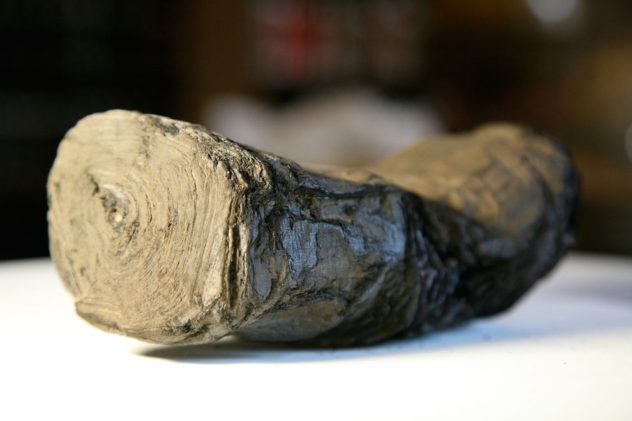
Mount Vesuvius erupted in 79 A.D., and it buried Pompeii and the neighboring city of Herculaneum under a layer of ash. The city was excavated in 1752, and among the artifacts recovered were a series of scrolls that had belonged to the resort town’s massive library, dubbed the Villa of the Papyri for its treasure trove of around 1,800 scrolls.
Unfortunately, when original excavators found the scrolls, they didn’t recognize what they had. Chucked on the fire or burned for torchlight, it’s impossible to know how many were lost before they realized what they were. Even after, they attempted to unroll some of the scrolls—peeling them apart with knives—and destroyed countless more.
Others ended up in the possession of conservationists who made concentrated efforts to unroll the scrolls, including work done by Vatican archivists in the decades after they were discovered. Even when Father Antonio Piaggio created a machine to unroll the scrolls, the inside was just as blackened and burnt as the outside. It wasn’t until Brigham Young University scholars took a look at the unrolled pieces under infrared light that they realized they could read some of the ink that was still left behind. With the advancement of multi-spectral imaging, the scrolls now don’t even have to be unrolled for scholars to be able to take composite images of them and piece together what they say.
In addition to the ink, the images are so detailed that they show each fiber of each layer of the scroll. That makes deciphering them difficult and painstaking work, but some major finds have already been uncovered. One of the scrolls is part of a text called On Nature, written by Epicurus and once thought to be lost. There is also a series of works by one of his students, Philodemus of Gadara. Those pieces were also thought to be lost, and include so much of his prose and poetry that it is now thought that the library the scrolls originally came from was his own personal collection.
Some of the scrolls remain so tightly wound that they are still illegible, but with every advance in technology, a little more gets unlocked—and the non-invasive nature of the imaging techniques used on the Herculaneum scrolls means that it is likely we will someday be able to read even more.


